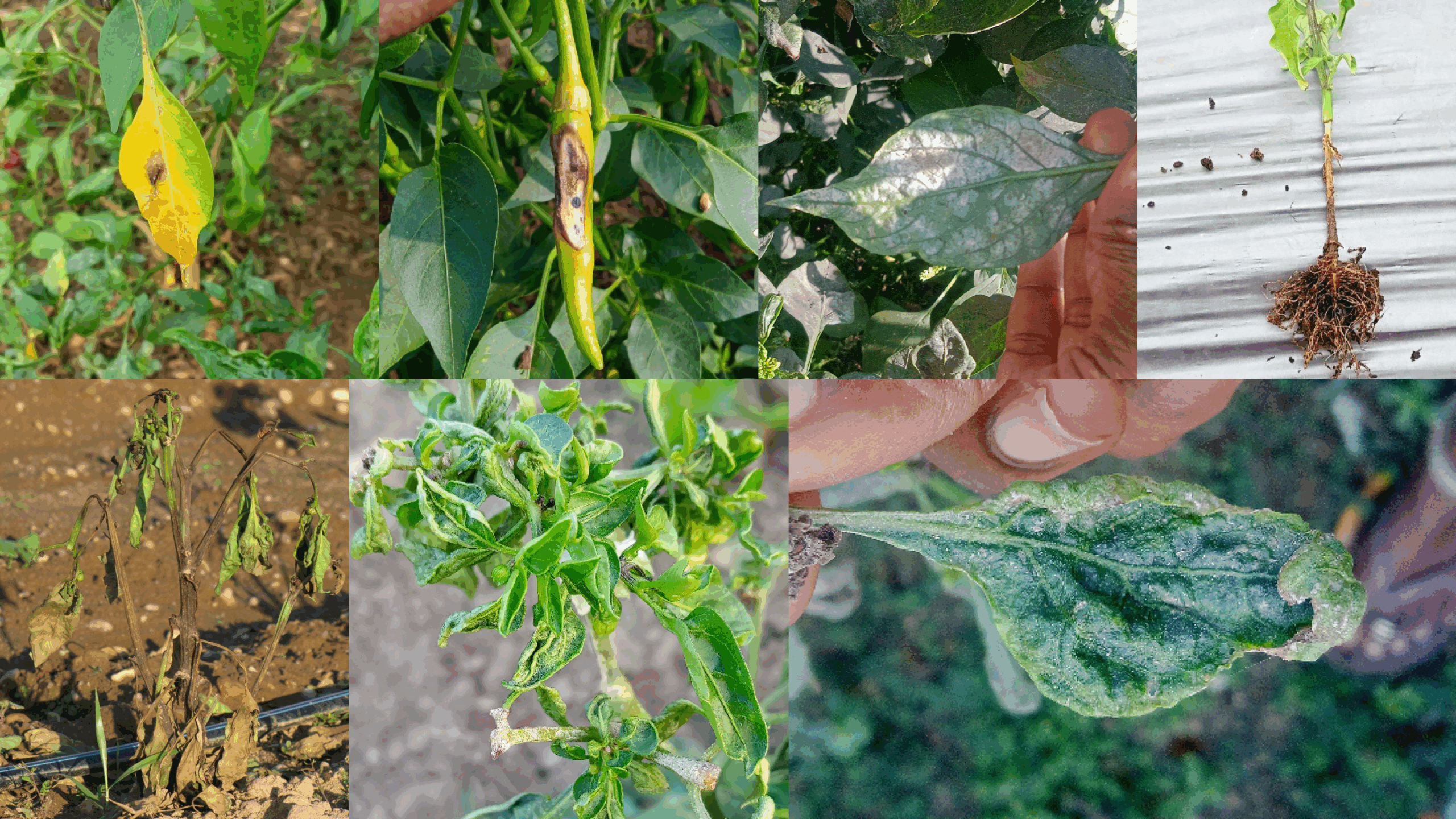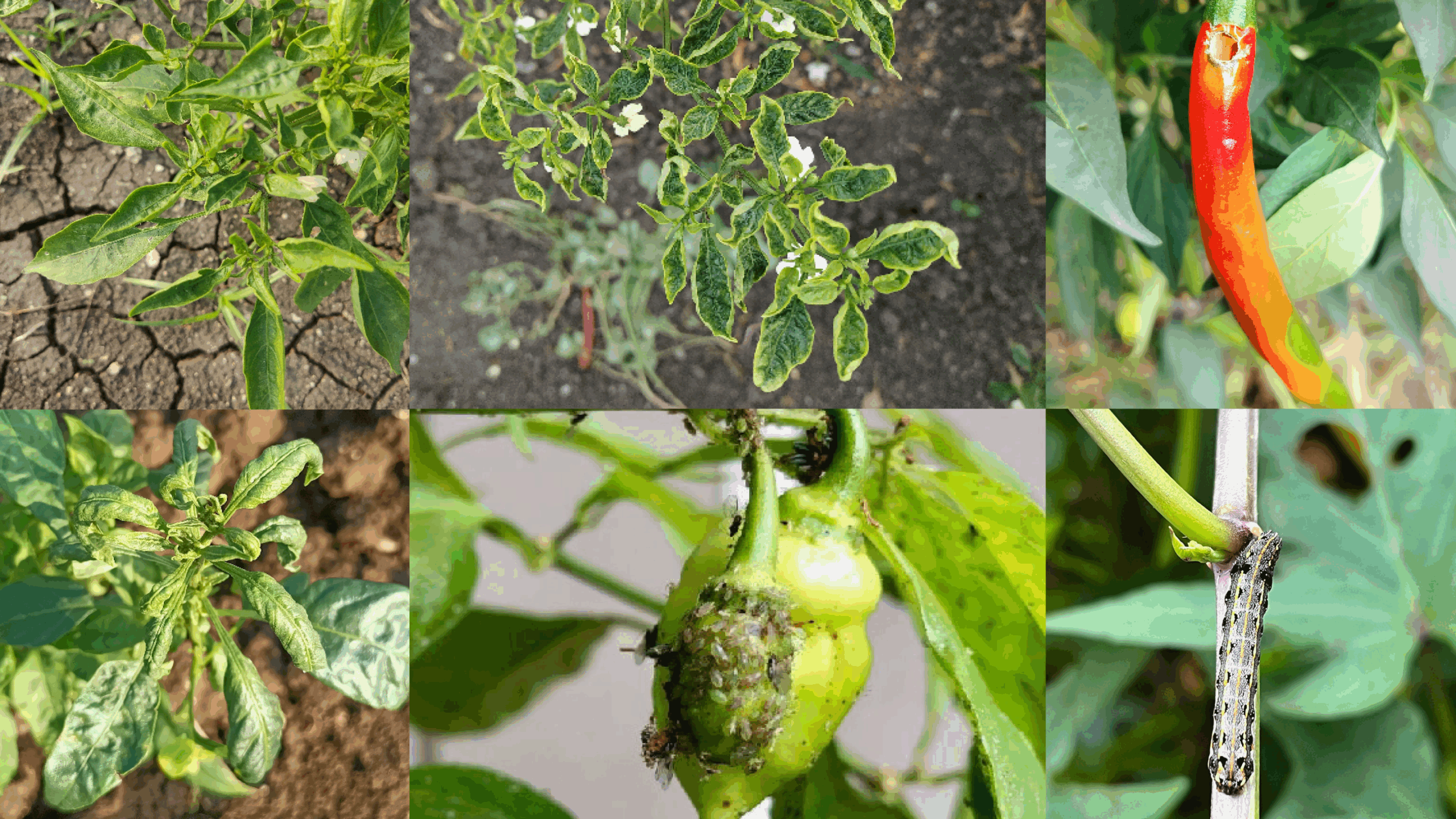Introduction of Chilli:
Chilli is a very important spice crop for Indians. It is grown across the country and supports lakhs of farmers. India is the largest chilli producer in the world. Chilli is mainly grown in the Kharif season (June to October) and in some places during the Rabi season.
Chilli Synopsis:
Botanical Name: Capsicum Annuum
Common Names: Chilli (English), Mirapa (Telugu), Mirchi (Hindi), Menasinakai (Kannada)
Top Paddy-Growing States:
Andhra Pradesh, Telangana, Karnataka, Maharashtra, Tamil Nadu, Madhya Pradesh, Rajasthan
Area & Production:
Chilli is India’s most important spice crop, grown across 7-8 lakh hectares, making the country the largest chilli producer in the world. Annual production is around 16-18 lakh tonnes of dry chilli, with an average yield of 2-2.5 tonnes per hectare. Kharif is the main season, but chilli is also grown in Rabi in some regions. Chilli farming supports lakhs of farmers and is vital for food security and exports.
To get a good harvest, better grain quality, and higher income, farmers must follow a proper step-by-step method. That’s why this SOP (Standard Operating Procedure) is prepared.
Soil: Grows best in well-drained sandy loam or black soils with good organic matter, pH 6.0-7.0. In the Deccan Plateau area, most of the soil is black soil, and farmers use it to grow chilli.
Climate: Needs warm weather, 20-35°C temperature, and lots of sunlight. Cannot tolerate frost or heavy rainfall during fruiting.
Open Pollinated Varieties: Guntur Sannam, G4, LCA-334, LCA-353, Byadgi, Pusa Jwala, Pusa Sadabahar
Hybrids: Tejaswini, NS-1701, Indam-5, US-341, Super Teja, Divya JyotiNursery Size: 100 square meters (1 cent) nursery is enough for 1 acre main field
Best Time: Make the nursery bed about 30 to 35 days before you want to plant in the main field.
Season:
Kharif Season: For the rainy season crop, start nursery work between May and June.
Rabi Season: For the winter season crop, start nursery work in September-October.
How to Prepare Nursery:
When to Start: 25–30 days before transplanting.
- Select a place near water with good drainage.
- Make raised beds of 1 meter width, 15 cm height, and a convenient length.
- Mix 10–15 kg well-decomposed FYM per 10 square meters of nursery.
- Add 100 g SSP (Single Super Phosphate) per 10 square meters.
To get a good harvest, better grain quality, and higher income, farmers must follow a proper step-by-step method. That’s why this SOP (Standard Operating Procedure) is prepared.
Seed Rate: 1000 – 1200 g seeds sufficient for 1 acre main field.
Seed Treatment:
- Use fungicides like Carbendazim or Thiram @ 2 g per kg seed.
- For protection from soil insects, treat seeds with Imidacloprid @ 5 ml per kg of seed.
- After treatment, dry seeds in the shade before sowing.
- Make shallow lines 5-7 cm apart on beds
- Sow seeds thinly and cover with fine soil mixed with FYM
Cover beds with paddy straw until germination
- Water gently twice daily (morning and evening)
- Provide shade for the first 10-15 days
- Spray 19:19:19 water-soluble fertilizer @ 5 g/liter water at 15 days
- Protect from pests by spraying Imidacloprid if needed
- Plough 2-3 times for fine tilth
- Add 8-10 tons of farmyard manure per acre during the last ploughing
- Make ridges and furrows for better drainage (especially in heavy rainfall areas)
- For drip irrigation, prepare raised beds of 90-100 cm width
When to tranaplant: When seedlings are 30-35 days old (4-6 true leaves)
Spacing: Row to Row: 60 cm and Plant to Plant: 45 cm
How to Transplant
- Make small pits at marked spots
- Apply 5 g DAP per pit before transplanting
- Transplant in evening hours or on cloudy days
- Water immediately after transplanting
Basal Application (per acre):
- 8-10 tons well-decomposed FYM/compost
- 40 kg Nitrogen (87 kg Urea)
- 40 kg Phosphorus (250 kg SSP)
- 30 kg Potash (50 kg MOP)
Top Dressing (per acre):
- First dose: 20 kg N (43 kg Urea) at 30 days after transplanting
- Second dose: 20 kg N (43 kg Urea) at 60 days after transplanting
- Third dose: 20 kg N (43 kg Urea) at 90 days after transplanting
Micronutrients:
- Spray Zinc Sulphate @ 2 g/liter + Boric Acid @ 1 g/liter at flowering stage
- For better fruit set, spray 19:19:19 @ 5 g/liter during flowering and fruiting
- First irrigation immediately after transplanting
- Next irrigations at 7-10 day intervals
- Critical stages: flowering and fruit development
- Avoid waterlogging at all stages
- For drip irrigation, give water on alternate days
- First weeding at 20-25 days after transplanting
- Second weeding at 40-45 days after transplanting
- Mulching with plastic film or organic material helps control weeds
- Chemical Control: Use Pendimethalin 30% EC @ 1 liter per acre as a pre-emergence herbicide
- First picking 75-90 days after transplanting
- Pick green chillies every 15-20 days
- For dry red chillies, allow the fruits to mature fully on the plant
- Dry red chillies in the sun for 7-10 days until the moisture content reduces to 10%
- Store in clean, dry gunny bags in a well-ventilated place
| Type | Yield (quintals/acre) |
|---|---|
| Green Chilli (Hybrids) | 80-100 |
| Green Chilli (Varieties) | 60-80 |
| Dry Red Chilli (Hybrids) | 25-35 |
| Dry Red Chilli (Varieties) | 15-25 |
Want to be part of our next event?

